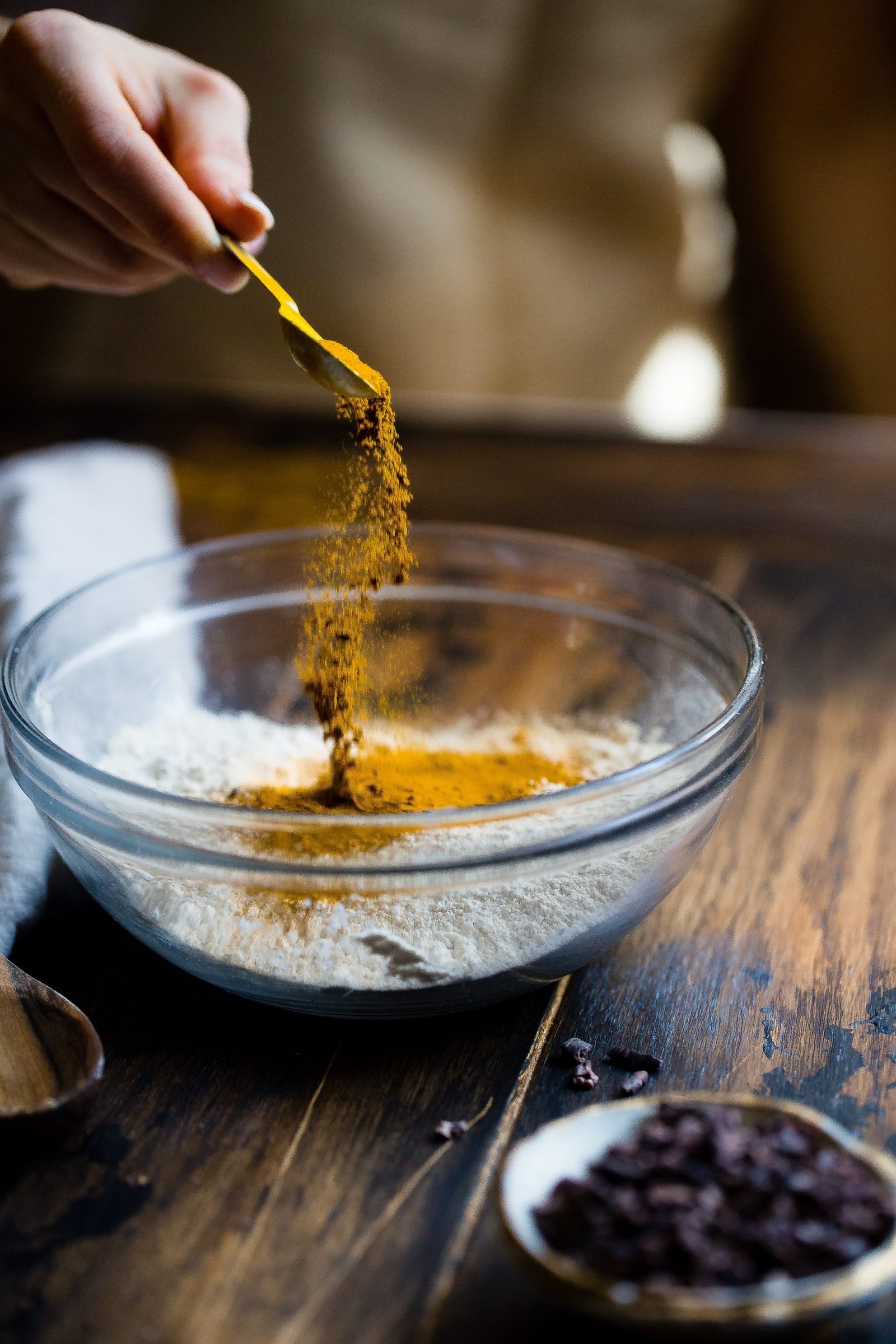Healthy Cooking Hacks: Tips for Making Nutritious Meals

1. Swap frying for air frying to reduce oil usage
Air fryers have become a favorite cooking hack for health enthusiasts and busy cooks alike. By using up to 80% less oil than traditional frying methods, these nifty devices make it easier to enjoy your favorite fried foods without the guilt.
The secret lies in how air fryers work. They circulate hot air around the food at high speeds, typically around 400 degrees Fahrenheit. This process achieves that much-desired crispy texture on the outside while keeping the inside tender and juicy. The result? A significantly lower fat content in your dishes.
One of the biggest advantages of switching to an air fryer is the reduction in overall calorie intake. Since foods absorb less oil during cooking, you’re not only cutting down on fats but also slashing unnecessary calories from your diet—an easy framework for healthier eating without sacrificing flavor.
Moreover, this method isn’t just about health benefits; it’s also an easy way to save space in your kitchen. Unlike bulky deep-fryers that require a dedicated spot on the counter or storage space in cabinets or fridge, most air fryers are compact enough to fit easily into a cupboard or serve as a go-to container on your countertop.
2. Use Greek yogurt as a creamy substitute in recipes
Greek yogurt packs a punch with its higher protein content compared to regular yogurt or cream. This makes it not just a healthier choice, but also one that adds nutritional value to your meals.
One of the best tricks up its sleeve is replacing mayonnaise and sour cream in dips and dressings. Imagine your favorite ranch dressing or creamy dip, but with fewer calories and more protein. That’s what Greek yogurt brings to the table.
It doesn’t stop there.Greek yogurt can be a game-changer. By substituting oils or butter with Greek yogurt, you’re enhancing moisture in your baked goods without piling on extra calories. Think moist cakes, fluffy pancakes, and tender muffins—all made lighter and healthier.
Here’s why this swap works wonders:
- Higher Protein: Keeps you fuller for longer.
- Fewer Calories: Helps manage weight better.
- Versatility: Works well in both savory dishes and sweet treats.
3. Incorporate whole grains instead of refined grains
Whole grains are powerhouses of nutrition, retaining essential nutrients and fiber that get lost during the refining process. When you opt for whole grain pasta or swap regular rice with its whole grain counterpart, you’re choosing a meal that not only tastes good but also does wonders for your health.
Eating foods rich in whole grains is linked to a lower risk of heart disease, diabetes, and obesity. This connection isn’t just about what these grains lack (like excess processing); it’s about what they offer—nutritious food components such as fiber which helps in controlling blood sugar levels and reducing cholesterol.
One of the standout benefits of incorporating whole grains into your diet is their ability to provide sustained energy release. Unlike refined starches that can lead to spikes in blood sugar followed by crashes, foods like oatmeal or whole grain bread keep you feeling full longer due to their high fiber content. This makes them an excellent choice for anyone looking to maintain energy levels throughout the day without resorting to snacking on less healthy options.
Next time you’re at the grocery store, consider making these swaps:
- Choose oatmeal instead of sugary breakfast cereals.
- Opt for whole grain pasta over traditional white pasta.
- Replace white bread with its whole-grain version.
4. Choose natural sweeteners like honey over refined sugar
Choosing natural sweeteners like honey over refined sugar can be a game-changer in your cooking. Honey isn’t just about adding sweetness; it’s packed with antioxidants not found in granulated sugar. These antioxidants help combat harmful free radicals in the body, contributing to overall health.
Moreover, natural sweeteners have a lower glycemic index compared to their refined counterparts. This means they impact your blood sugar levels less dramatically, helping you maintain steady energy levels without the spikes and crashes often associated with high-sugar foods. It’s an easy change that can make managing hunger cues and avoiding temptation a bit more manageable.
But the benefits don’t stop there. Honey and other natural sweeteners add depth and complexity to dishes that granulated sugar simply can’t match. Imagine drizzling honey over peanut butter toast or using it to sweeten homemade salad dressings—these small changes bring big flavor upgrades plus bonus points for nutritional value.
5. Steam vegetables to retain more nutrients
Steaming is a superhero among cooking methods, especially. Unlike boiling, where water-soluble vitamins like Vitamin C and B can dive out into the water, steaming keeps these vital nutrients tightly packed within your meal vegetables.
Vegetables such as broccoli and spinach particularly benefit from this gentle heat method. Steaming allows them to stay closer to their natural state, ensuring that antioxidants—those powerful health-boosting compounds—are not lost in the cooking process. It’s like giving your vegetables a warm hug, allowing them to release their best without taking away their essence.
Another win for steaming? No added fats are required. This makes it an excellent choice for anyone looking closely at calorie intake but still wanting flavorful meals bursting with nutrition. Imagine enjoying perfectly tender broccoli or spinach that retains its texture and color without any oil or butter.
6. Use herbs and spices for flavor instead of salt
Swapping out salt for herbs and spices not only punches up the flavor but also sidesteps the health risks tied to high blood pressure. Imagine transforming a simple dish into an aromatic feast just by adding a pinch of your favorite spices. The magic lies in their ability to enhance taste without piling on the sodium.
Herbs and spices are more than just flavor boosters; they come packed with health benefits, including anti-inflammatory properties. For instance, garlic doesn’t just add a robust aroma to your dishes; it’s also known for its heart-healthy advantages.
For those monitoring their blood pressure or looking to reduce sodium intake, this hack is particularly beneficial. It’s about making small changes that have big impacts on your overall health. Instead of reaching for the salt shaker, grab a jar of mixed herbs or ground spices next time you’re cooking.
Here are some quick tips:
- Start with small amounts and adjust according to taste.
- Experiment with combinations like rosemary and thyme for chicken or cumin and coriander for vegetable dishes.
- Store your herbs and spices in a cool, dry place to maintain their potency.
7. Cook with lean cuts of meat for lower fat content
Lean meats are a powerhouse of essential proteins while keeping the saturated fat at bay. Integrating lean cuts into your diet not only fuels your body with necessary nutrients but also plays a significant role in managing cholesterol levels, crucial for heart health. Think chicken breast over thighs, or opt for turkey and fish instead of higher-fat pork and beef cuts.
Trimming visible fat from meat before cooking is another simple yet effective strategy to reduce caloric intake without compromising on taste. This minor adjustment when preparing dinners can have a substantial impact on your overall health. Whether you’re slicing up some raw meats for a stew or roasting a piece of lean beef on the stove, removing excess fat helps keep those calories in check.
Moreover, incorporating alternatives like lentils or rotisserie chicken into meals offers versatility and convenience without skimping on protein. These options not only make meal prep easier (think prechopped veggies or leftover rotisserie chicken for quick salads) but also ensure you’re sticking to healthier choices even when time is tight.
8. Prepare homemade sauces to control ingredients
Creating your own sauces is one of the most effective healthy cooking hacks. Store-bought versions often come packed with preservatives and additives that you might want to avoid. By making sauces at home, you have full control over what goes into them.
One major advantage is the ability to adjust key components like sugar, salt, and fat according to your taste and health requirements. This customization ensures that your meals are not only delicious but also aligned with your dietary goals.
Moreover, homemade sauces allow for the incorporation of fresh, wholesome ingredients. Imagine a tomato sauce made with ripe tomatoes from the market or a pesto bursting with just-picked basil leaves. These choices elevate both the flavor and nutritional value of your dishes.
Here’s why opting for homemade sauces aligns perfectly with kitchen hacks aimed at healthier eating:
- Avoids unwanted chemicals: You bypass all those hard-to-pronounce ingredients on store labels.
- Customization: Tailor seasoning levels precisely to suit personal preferences or dietary needs.
- Boost in nutrients: Incorporating fresh vegetables or herbs boosts vitamin and mineral intake.
- Food safety basics: Preparing food at home allows for better adherence to food safety practices like proper temperature control and avoiding cross-contamination.
9. Opt for plant-based oils rich in unsaturated fats
Unsaturated fats are the heroes of heart health, actively working to improve cholesterol levels and keep your ticker ticking smoothly. Unlike their saturated counterparts found in animal products, these fats can be a game-changer for anyone looking to maintain or improve their cardiovascular wellness.
Oils like olive, avocado, and canola don’t just bring a wealth of unsaturated fats to the table; they’re also incredibly versatile. Whether you’re dressing a salad or sautéing vegetables, these oils can handle the heat and add depth to your dishes without compromising on health benefits.
But it’s not just about what these oils lack (hello, harmful saturated fats) — it’s also about what they bring. Packed with antioxidants and beneficial phytochemicals that you won’t find in animal fats, using plant-based oils is like giving your body an extra layer of protection against various diseases.
- Olive oil is perfect for dressings or low-heat cooking.
- Avocado oil has a high smoke point, making it ideal for frying or baking.
- Canola oil, often underrated, is great for all-purpose cooking due to its neutral flavor.
10. Batch cook and freeze portions for healthy meals on demand
Batch cooking and freezing portions is a game-changer for anyone looking to eat healthily without spending hours in the kitchen every day. It’s all about making your future self thank you by preparing balanced meals ahead of time.
By dedicating a few hours over the weekend to cook, you can have a fridge full of easy freezer meals ready to go. This method ensures control over portion sizes, crucial for maintaining a healthy diet and reducing the temptation to overeat.
Having premade meals at your disposal means you’re less likely to give in to hangry cravings or stress meals that lead you straight into the arms of fast food options or restaurant nights more often than necessary. You know how it goes: one minute you’re thinking about what fresh food you could prepare, and next thing, you’re browsing through takeout menus because hunger hit hard.
Freezing preserves not only the taste but also the nutrient quality of cooked foods until consumption. Whether it’s dishes made in your slow cooker or favorite homecooked meals divided into perfect portion-controlled servings, having these nutritious options within reach helps combat those impulsive orders from restaurants.
Frequently Asked Questions
Can I really make all my favorite fried foods with an air fryer?
Absolutely! Air frying is like giving your favorite fried dishes a healthy makeover. You’ll use way less oil, but still keep that crispy texture we all love. It’s like magic, but for cooking.
Is Greek yogurt a good substitute in any recipe?
Pretty much! Greek yogurt is super versatile. Think of it as the Swiss Army knife in your fridge. It can add creaminess to sauces, dressings, and even baked goods without all the extra fat.
Why should I pick whole grains over refined grains?
Choosing whole grains is like upgrading from a flip phone to a smartphone; you get so much more! They pack more nutrients and fiber which are great for your body, keeping you fuller longer and happier on the inside.
How do natural sweeteners stack up against refined sugar?
Natural sweeteners like honey are the secret weapon in your pantry. They’re not just sweet – they bring their own unique flavors and some nutritional benefits to the table too, unlike their refined counterparts which are pretty much empty calories.
What’s the big deal about steaming vegetables?
Steaming veggies is like getting them ready for a gala; they come out looking bright and beautiful while locking in those precious nutrients. Plus, it’s quick and easy – no fancy kitchen gadgets required!
Can herbs and spices really replace salt?
Yes! Herbs and spices are like the ensemble cast of your cooking show—they add depth, flavor, drama without relying on salt’s one-note performance. Your taste buds (and heart) will thank you!
Why should I bother making homemade sauces?
Homemade sauces put you in control—like being the director of your own culinary movie. You decide what goes in them, sidestepping unnecessary additives or sugars found in store-bought versions. Plus, making them yourself feels incredibly rewarding.



